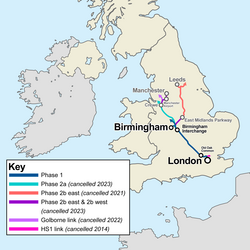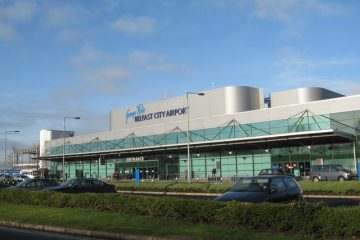HS2: Revolutionising UK Railway Infrastructure

Introduction
The High Speed 2 (HS2) project has been a focal point in discussions about the future of transport in the United Kingdom. As one of the most significant infrastructure projects in the country, HS2 aims to enhance connectivity between major cities, whilst striving to alleviate congestion on existing rail networks. This ambitious project has generated considerable debate regarding its economic benefits, environmental impact, and overall feasibility, making it a topic of significant relevance and importance.
Key Developments and Progress
Currently, HS2 is being developed in phases, with Phase One connecting London to Birmingham and subsequent phases extending the line to Manchester and Leeds. As of late 2023, construction is well underway in various areas, with significant progress reported in both the West Midlands and London regions. The UK government has allocated substantial resources towards this project, with estimates of costs reaching nearly £100 billion.
The primary goal of HS2 is not merely to cut journey times, but also to increase capacity on the railways, allowing more people to travel by train. This move is expected to lessen reliance on cars and reduce carbon emissions, aligning with the UK’s goals for sustainable transport solutions. Additionally, HS2 is predicted to create tens of thousands of jobs in construction and subsequent operations, contributing to economic growth.
Challenges and Controversies
Despite its promise, HS2 has faced significant criticism and opposition. Concerns have been raised regarding its environmental impact, particularly on wildlife and natural habitats along the planned routes. Campaign groups and some community members have protested against the construction, arguing that it threatens both local ecosystems and heritage sites.
Financially, there is also skepticism regarding the project’s budget, with many analysts warning that costs may spiral further. The government has faced pressure to ensure accountability and transparency in the project’s management, especially as it continues to consume vast public funds.
Conclusion
As the HS2 project continues to develop, its ultimate impact on the UK’s transport landscape remains to be fully realised. If successful, HS2 could revolutionise how people travel across the country, improve economic conditions in various regions, and contribute to a more sustainable future. However, the challenges it faces must be addressed meticulously to ensure that it meets its objectives without compromising the environment or financial viability.
In conclusion, HS2 stands as a significant case study in modern infrastructure development, reflecting both the ambitions and challenges of large-scale public projects in the UK today. Stakeholders will be watching closely as the next phases unfold, assessing both their immediate and long-term implications.







